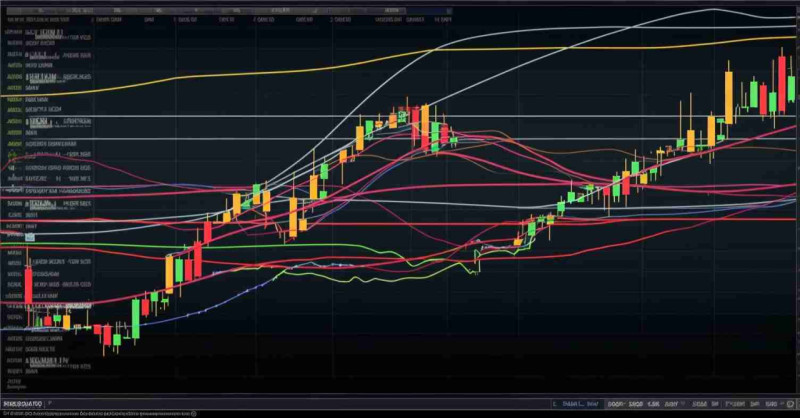
The Forex market, also known as the foreign exchange market, is a decentralized global market for trading currencies. It is the largest and most liquid financial market in the world, with an average daily trading volume of more than $6 trillion. Participants in the Forex market include banks, financial institutions, governments, corporations, and individual traders.
Understanding the Forex market's open hours and depth is essential for traders to make informed decisions, manage risk, and capitalize on potential trading opportunities. Market hours dictate when trading is most active, while market depth reflects the level of liquidity and the number of buy and sell orders available at different price levels.
Forex Market Overview
As a global marketplace, the Forex market operates 24 hours a day, five days a week. Trading begins on Sunday evening (5 pm Eastern Time) in Sydney, Australia, and concludes on Friday evening (5 pm Eastern Time) in New York, United States. This continuous operation allows trading to move through different financial centers worldwide, such as Tokyo, London, and New York.
Importance of Understanding Forex Market Open Hours and Depth
Knowing the Forex market's open hours is crucial for traders because it helps them identify periods of high trading activity and potential opportunities. Additionally, understanding market depth is vital as it reveals the market's ability to absorb large orders without significant price fluctuations. A deep market allows for more efficient price discovery and tighter bid-ask spreads, which benefits traders.
Main Focus: Is the Forex Market Open on July 4th and Thanksgiving?
The Forex market operates continuously during the weekdays; however, holidays such as July 4th (Independence Day) and Thanksgiving can affect the market's hours and depth. Although the market does not close entirely on these holidays, trading volume and liquidity are significantly reduced due to the closure of US financial institutions and banks. Consequently, this has a notable impact on the Forex market's open hours and depth during these periods.

Explanation of the Forex Market Schedule During U.S. Holidays
Although the Forex market operates 24/5, it is essential to consider the impact of U.S. holidays on the market schedule. During U.S. holidays, such as July 4th (Independence Day), the market does not close entirely. However, the closure of U.S. financial institutions and banks reduces trading volume and liquidity, leading to a decrease in market activity.
Impact of July 4th on the Forex Market
- Reduced liquidity: With the U.S. market closed for the holiday, there is a significant decline in trading volume, leading to reduced liquidity in the Forex market. This can result in wider bid-ask spreads and increased price volatility, making it more challenging for traders to execute trades and manage risk.
- Limited market movement: The absence of U.S. traders and financial institutions can lead to limited market movement in currency pairs, particularly those involving the U.S. dollar (USD). As a result, some traders may find it difficult to capitalize on opportunities during this period.
- Lower economic activity: As Independence Day is a public holiday, most U.S. economic releases are postponed or rescheduled, leading to a lack of market-moving news and reduced market volatility.
Trading Strategies and Tips for Trading During July 4th
While the Forex market may present challenges during July 4th, there are still potential trading opportunities for those who wish to participate. Here are some strategies and tips for trading during this period:
- Focus on non-U.S. currency pairs: To avoid reduced liquidity and limited market movement, traders can focus on currency pairs involving other major currencies, such as the euro (EUR), British pound (GBP), or Japanese yen (JPY).
- Trade during active market sessions: While U.S. trading is limited on July 4th, other financial centers like London and Tokyo remain active. Traders can take advantage of increased liquidity and market movement during these sessions.
- Monitor global events and news: Stay informed about global events and news that could influence the Forex market, as these factors may present trading opportunities even during U.S. holiday closures.
- Use caution with leverage: Given the potential for increased price volatility during holidays, it's essential to exercise caution when using leverage. Make sure to manage risk appropriately and consider using stop-loss orders to protect your positions.
In conclusion, the Forex market is open on July 4th, but trading activity and liquidity are significantly reduced due to the U.S. market closure. By adapting trading strategies and focusing on non-U.S. currency pairs, traders can still find opportunities to profit during this holiday period. However, it is crucial to exercise caution and manage risk, as the reduced liquidity can lead to increased price volatility.

Importance of the Thanksgiving Holiday in the U.S.
Thanksgiving is a significant holiday in the United States, celebrated on the fourth Thursday of November. It is a time when families gather to give thanks and share a festive meal. Due to its importance, financial institutions and banks in the U.S. close, which can impact the Forex market.
Effects of Thanksgiving on the Forex Market
- Reduced liquidity: As U.S. financial institutions and banks are closed during Thanksgiving, trading volume declines, leading to reduced liquidity in the Forex market. This can result in wider bid-ask spreads and increased price volatility, making it more challenging for traders to execute trades and manage risk.
- Limited market movement: The absence of U.S. traders and financial institutions during Thanksgiving can lead to limited market movement in currency pairs, especially those involving the U.S. dollar (USD). As a result, traders may find it difficult to capitalize on opportunities during this period.
- Lower economic activity: Thanksgiving is a public holiday in the U.S., and most economic releases are postponed or rescheduled. This lack of market-moving news can lead to reduced market volatility and fewer trading opportunities.
Trading Strategies and Tips for Trading During Thanksgiving
Despite the challenges posed by the Thanksgiving holiday, traders can still find potential opportunities in the Forex market by adjusting their strategies. Here are some tips for trading during Thanksgiving:
- Focus on non-U.S. currency pairs: To avoid reduced liquidity and limited market movement, traders can concentrate on currency pairs involving other major currencies, such as the euro (EUR), British pound (GBP), or Japanese yen (JPY).
- Trade during active market sessions: While U.S. trading is limited during Thanksgiving, other financial centers like London and Tokyo remain active. Traders can take advantage of increased liquidity and market movement during these sessions.
- Monitor global events and news: Stay informed about global events and news that could influence the Forex market, as these factors may present trading opportunities even during U.S. holiday closures.
- Use caution with leverage: Given the potential for increased price volatility during holidays, it's essential to exercise caution when using leverage. Make sure to manage risk appropriately and consider using stop-loss orders to protect your positions.
In conclusion, the Forex market remains open during Thanksgiving, but trading activity and liquidity are significantly reduced due to the U.S. market closure. By focusing on non-U.S. currency pairs, trading during active market sessions, monitoring global events and news, and using caution with leverage, traders can navigate the market during Thanksgiving and potentially capitalize on trading opportunities. However, it is crucial to exercise caution and manage risk, as the reduced liquidity can lead to increased price volatility.

Definition and Significance of Forex Market Depth
Forex market depth refers to the level of liquidity and the number of buy and sell orders available at different price levels in the market. It provides an insight into the supply and demand for a specific currency pair and helps traders gauge the market's ability to absorb large orders without causing significant price fluctuations. A deep market is characterized by a high number of buy and sell orders, allowing for smoother execution of trades with minimal price impact. Greater market depth allows for more efficient price discovery and tighter bid-ask spreads, which are beneficial for traders.
How to Analyze and Use Market Depth in Trading
Market depth can be analyzed using a tool called the "depth of market" (DOM), also known as the "order book" or "level 2" data. The DOM displays the buy and sell orders for a currency pair at various price levels, showing the number of orders at each level. By analyzing the DOM, traders can:
- Identify support and resistance levels: Large clusters of buy and sell orders can act as potential support and resistance levels. Traders can use this information to set entry and exit points for their trades.
- Gauge market sentiment: If there is a higher number of buy orders than sell orders at a particular price level, it may indicate a bullish sentiment in the market, and vice versa.
- Detect potential price movements: Sudden changes in the DOM, such as the appearance or disappearance of large orders, can be a signal of potential price movements.
- Determine liquidity: A higher number of orders at different price levels indicates greater market depth and liquidity, which can help traders execute their orders more efficiently and with less slippage.
The Relationship Between Market Depth and Holidays like July 4th and Thanksgiving
Holidays like July 4th (Independence Day) and Thanksgiving in the United States can have a considerable impact on Forex market depth. During these holidays, U.S. financial institutions and banks are closed, leading to a decline in trading volume and liquidity. This reduced activity can affect market depth in the following ways:
- Lower liquidity: The absence of U.S. traders and financial institutions during holidays results in decreased trading volume, which translates to reduced liquidity. Lower liquidity can lead to wider bid-ask spreads, making it more difficult for traders to execute orders at favorable prices.
- Increased price volatility: With fewer market participants, price fluctuations can become more significant, especially in currency pairs involving the U.S. dollar (USD). This increased price volatility can make it challenging for traders to manage risk and find suitable entry and exit points.
- Reduced order book depth: A thinner order book can result from the reduced liquidity during holidays. This means there are fewer buy and sell orders available at different price levels, which can cause slippage and make it more difficult for large orders to be executed without causing significant price movements.
In conclusion, understanding Forex market depth is crucial for traders to make informed decisions and manage risk effectively. By analyzing market depth using tools like the DOM, traders can identify support and resistance levels, gauge market sentiment, and detect potential price movements. However, it is essential to be aware of the impact of holidays like July 4th and Thanksgiving on market depth and adjust trading strategies accordingly.

Adapting Trading Strategies for Holidays
Trading during holidays like July 4th (Independence Day) and Thanksgiving can present unique challenges due to reduced market depth and liquidity. However, by adapting trading strategies, traders can still capitalize on potential opportunities while managing risks effectively. Here are some tips for adjusting your trading approach during holidays:
Adapting to Changes in Market Depth During Holidays
- Monitor market depth: Keep an eye on the depth of market (DOM) to gauge liquidity and identify any significant changes in buy and sell orders. This can help you detect potential price movements and make better-informed trading decisions.
- Adjust position sizes: Given the reduced liquidity during holidays, consider trading smaller position sizes to minimize the potential impact of price slippage and increased volatility.
- Widen stop-loss orders: To account for potential price fluctuations during holidays, consider widening your stop-loss orders to avoid getting stopped out prematurely due to temporary market fluctuations.
Identifying Potential Trading Opportunities During July 4th and Thanksgiving
- Focus on non-U.S. currency pairs: Since U.S. holidays can significantly impact currency pairs involving the U.S. dollar (USD), consider focusing on non-U.S. currency pairs to avoid reduced liquidity and limited market movement.
- Trade during active market sessions: Despite reduced trading activity in the U.S., other financial centers like London and Tokyo remain active during holidays. Capitalize on increased liquidity and market movement during these sessions to find potential trading opportunities.
- Monitor global events and news: Stay updated on global events and news that could influence the Forex market. These factors may present trading opportunities even during U.S. holiday closures.
Balancing Risks and Rewards When Trading During Holidays
- Exercise caution with leverage: Be cautious when using leverage during holidays, as increased price volatility can lead to larger losses. Ensure you manage risk appropriately and consider using lower leverage levels.
- Employ proper risk management: Use appropriate risk management tools like stop-loss orders, position sizing, and diversification to protect your trades and mitigate potential losses during holidays.
- Set realistic expectations: Understand that trading during holidays may present fewer opportunities and higher risks. Be prepared to adjust your expectations accordingly and accept that potential returns might be lower during these periods.
In conclusion, adapting your trading strategies during holidays like July 4th and Thanksgiving can help you navigate the challenges posed by reduced market depth and liquidity. By adjusting your approach, monitoring market depth, focusing on non-U.S. currency pairs, and employing proper risk management techniques, you can identify potential trading opportunities and balance risks and rewards when trading during holidays.

Are There Unique Trading Opportunities in the Forex Market on July 4th and Thanksgiving?
While the Forex market remains open during U.S. holidays like July 4th and Thanksgiving, the reduced trading activity and liquidity can significantly impact trading conditions. Despite these challenges, holidays can present unique trading opportunities for traders who know how to navigate the market during these periods. Here, we will discuss some of the specific trading opportunities that may arise during July 4th and Thanksgiving.
- Currency pairs with limited U.S. influence: During U.S. holidays, reduced trading activity primarily affects currency pairs involving the U.S. dollar (USD). However, this creates potential opportunities in other currency pairs with limited U.S. influence, such as crosses between the euro (EUR), British pound (GBP), and Japanese yen (JPY). These pairs may experience more stable liquidity and less price volatility during holidays.
- Anticipation of market movements: Market participants may adjust their positions before and after holidays, leading to unique price movements. Traders can analyze historical price data to identify recurring patterns and trends associated with holiday periods, which may offer potential trading opportunities.
- Trading during active market sessions: Despite reduced activity in the U.S. during holidays, other financial centers like London and Tokyo remain active. These sessions may offer increased liquidity and market movement, presenting opportunities for traders who can capitalize on the more active market hours.
- Taking advantage of low liquidity: While low liquidity can lead to increased price volatility and wider bid-ask spreads, skilled traders can use these conditions to their advantage. For instance, traders with a high-risk tolerance may capitalize on the increased price volatility by using short-term trading strategies, such as scalping or day trading, to exploit rapid price movements.
- Global events and news: During U.S. holidays, the market may be more sensitive to global events and news, particularly those unrelated to the U.S. economy. Traders can monitor these developments to identify potential trading opportunities that may arise from unexpected events or geopolitical developments.
In conclusion, while the Forex market experiences reduced trading activity and liquidity during U.S. holidays like July 4th and Thanksgiving, unique trading opportunities may still arise. By focusing on non-U.S. currency pairs, anticipating market movements, trading during active market sessions, and keeping a close eye on global events and news, traders can potentially capitalize on these unique opportunities. However, it is crucial to exercise caution and employ effective risk management strategies when trading during holiday periods, as the market conditions can be more challenging and unpredictable.
Conclusion
In this article, we have explored the impact of holidays, such as July 4th and Thanksgiving, on the Forex market's open hours and depth. We have emphasized the importance of understanding the changes in market depth and liquidity during these periods, as they can significantly influence trading conditions and opportunities.
The main points discussed include:
- The Forex market remains open during U.S. holidays like July 4th and Thanksgiving, but trading activity and liquidity are significantly reduced due to the closure of U.S. financial institutions and banks.
- Reduced market depth during holidays can result in wider bid-ask spreads, increased price volatility, and limited market movement, particularly for currency pairs involving the U.S. dollar (USD).
- Traders can adapt their trading strategies during holidays by focusing on non-U.S. currency pairs, trading during active market sessions, monitoring global events and news, and exercising caution with leverage and risk management.
Understanding the Forex market's open hours and depth during holidays is crucial for traders to make informed decisions and manage risk effectively. By applying the insights provided in this article, you can better navigate the challenges posed by holiday trading and potentially capitalize on opportunities while minimizing risks.
















